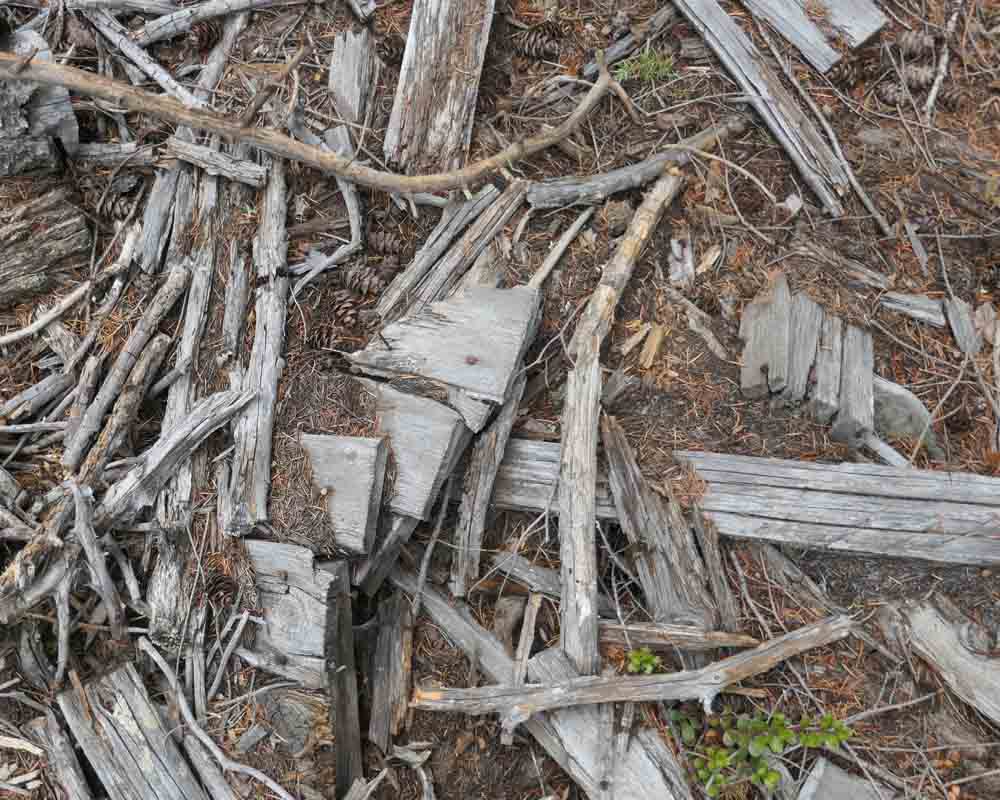Lookout Site Regions: Origin Site ~ North Central WA, Re-Lo Site ~ Northeast WA
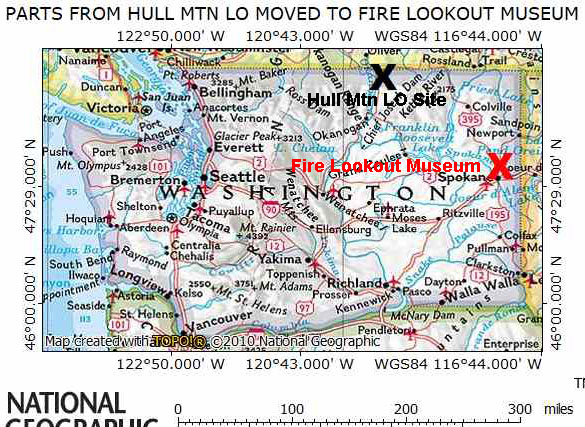
The Hull Mountain Lookout re-location is interesting as only parts of the dismantled lookout cab were moved to Ray Kresek’s Fire Lookout Museum in Spokane. These parts, along with parts from six other similar lookouts, were used to build the L-6 lookout which has been displayed at State Fairs throughout the Pacific Northwest and is now on display at the Fire Lookout Museum.
History of the Mount Hull Lookout
In 1925, the CGS placed a benchmark labelled Oroville 1925 at an elevation of 4626’ near the top of an unnamed mountain that was described as 1/1/2 miles northwest of Mt. Hull. The Mt. Hull Fire Lookout was later built near this benchmark and this unnamed peak became shown on maps as Mt. Hull. In May, 1934 a series of articles in the Republic News-Miner newspaper described the building of a road to Mt. Hull, the completion of the road to the top and the start of the construction of the lookout tower and station. Panoramic photos were taken from the tower on September 16, 1934.
Ray Kresek’s Fire Lookouts of the Northwest describes the lookout as a 72’ pole L-6 tower with a cabin. At one time, more than 200 of these 8′ x 8′ wood USFS-design L-6 cabs stood in the Pacific Northwest. The panoramic photo data sheet lists the tower and camera heights as 60’ and 15’. This would place the camera 75’ above ground level which would be consistent with a 3’ tripod atop the 72’ top of the lookout cab.
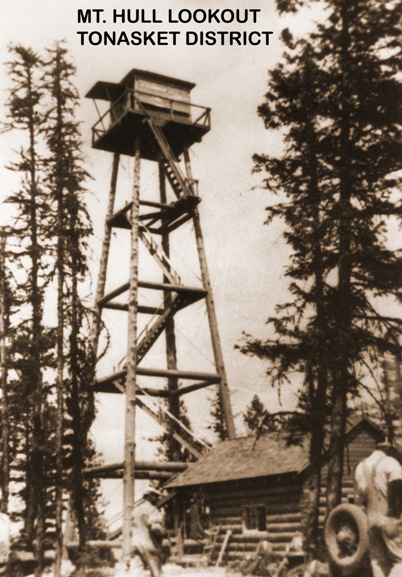
Hull Mtn L-6 lookout tower with the log cabin ground living quarters.

9/16/1934 North Panoramic Photo ~ 60’ + 15’ camera height noted on the left edge of the photo.
The Aircraft Warning Service built sleeping quarters and a woodshed when they used it from March, 1942 until July, 1943. Control of the site then reverted to the Forest Service.
The use as a fire lookout stopped sometime later in the 1940s. The lookout was torn down in the 1950s, but the ground cabin remained. The NGS Data Sheet 1956 and 1958 Station Recovery Reports includes: “LOT {lookout tower} has been dismantled” and “Continue…to lookout cabin and the station. Station Marker is approximately 25 ft. N of a cabin.” Other references state that the log cabin was donated to the Boy Scouts and it then burned down in the 1960s
The fire Lookout Museum’s L-6 Lookout
The non-profit and non-commercial Fire Lookout Museum was founded in 1969 by the Kresek family and the Historic Lookout Project.
FFLA’s LOOKOUT NETWORK ~ Vol. 3-4, Winter, 1993: “…when Ray Kresek began compiling the work that eventually led to the publication of his books FIRE LOOKOUTS OF THE NORTHWEST and FIRE LOOKOUTS OF OREGON AND WASHINGTON, he also began collecting a huge assortment of photographs of lookouts long since destroyed. Then, as it became obvious that lookouts were becoming a thing of the past, his research led to memorabilia, old lookout furnishings, tools, signs, and even the outdated radios from the era of lookouts. Then came a fire tower itself …Kresek chose for the actual museum the smallest of all: an 8 x 8 foot “L-6” style cab. Its size made it possible to trailer the cab filled with relics to State fairs throughout the Pacific Northwest.”
RAY KRESEK EMAIL: “The L-6 here at the Fire Lookout Museum was built with parts from the ruins of seven L-6 towers in WA; hinges, shutters, shutter brackets, door, floor, catwalk, tower posts, X braces, bolts, siding. Porcupine (Chapter 10), Annie, Buckhorn, Hull (Ch 14), Stranger, CCA, Turnbull (Ch 15). We weren’t able to find any window frames, so they aren’t authentic. We chose also to panel the inside walls and create an attic with ¼” plywood for an exhibit at state fairs in Spokane & Yakima where it took the highest ribbons in 1984, and in OR where it was the guest of honor at the 1985 Oregon State Fair in Salem. It has rested in my back yard ever since. It is scheduled to be moved to the Priest Lake Museum in Idaho when I can no longer maintain the Lookout Museum. Since it is not an authentic fire lookout, there was controversy when Keith Argow insisted on making it a historic lookout on his National Historic Lookout Register.”
Our Visit to the Fire Lookout Museum L-6 Lookout ~ 9/4/2021
The one acre Fire Lookout Museum is located at Ray Kresek’s home north of downtown Spokane. The Museum is open to the public by appointment. After making our appointment, we spent a delightful afternoon visiting the museum and swapping lookout tall tales with Ray.
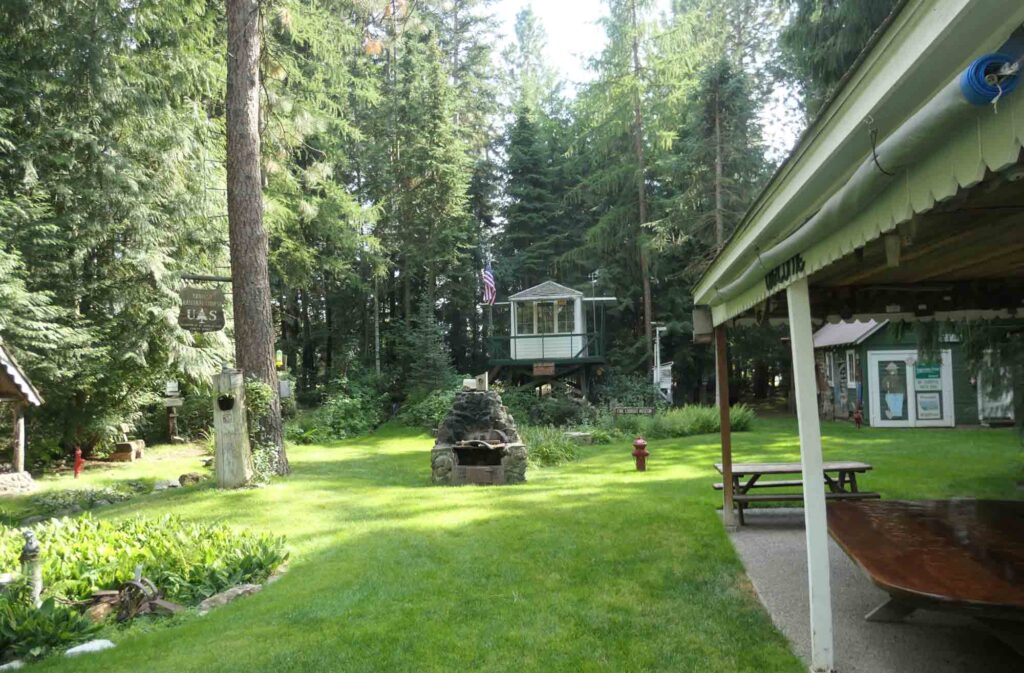
The forest park setting features the thirty conifer tree species found in the Pacific Northwest. The L-6 lookout and a re-located DNR fire guard station and many other lookout mementoes can be seen ~ 9/4/2021 photo.
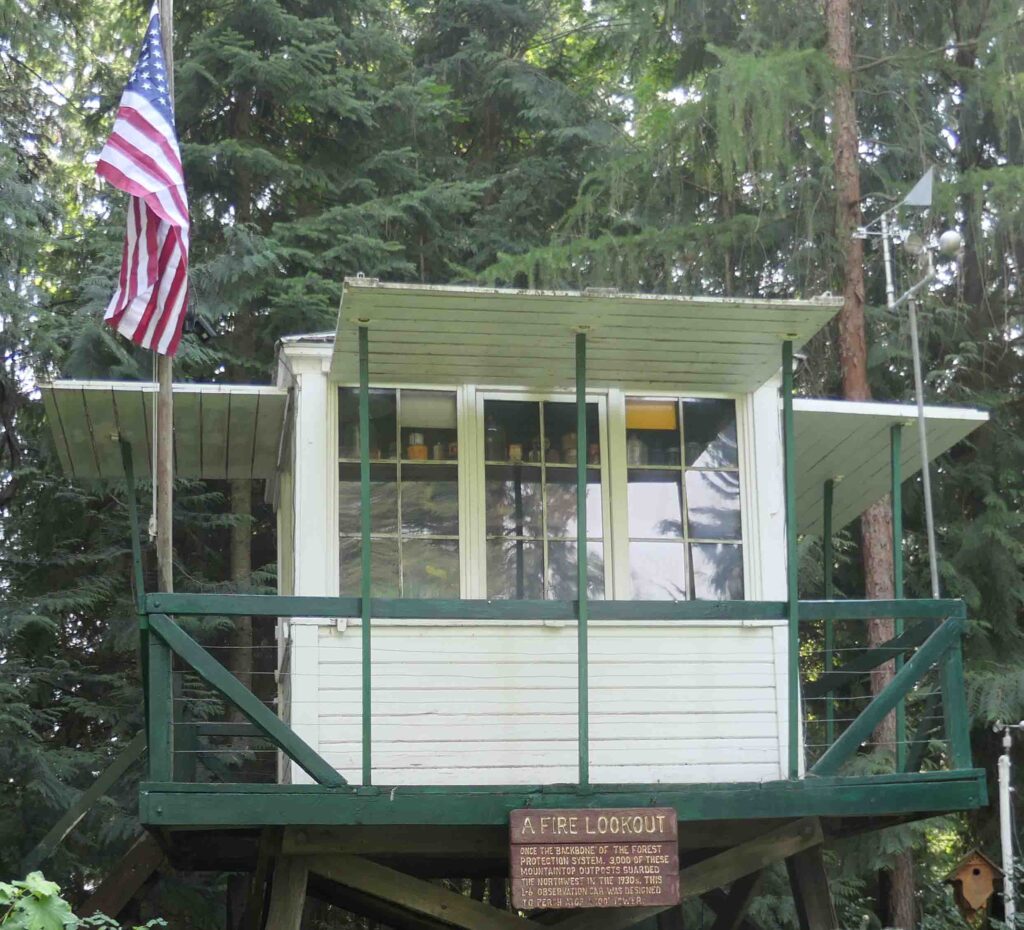
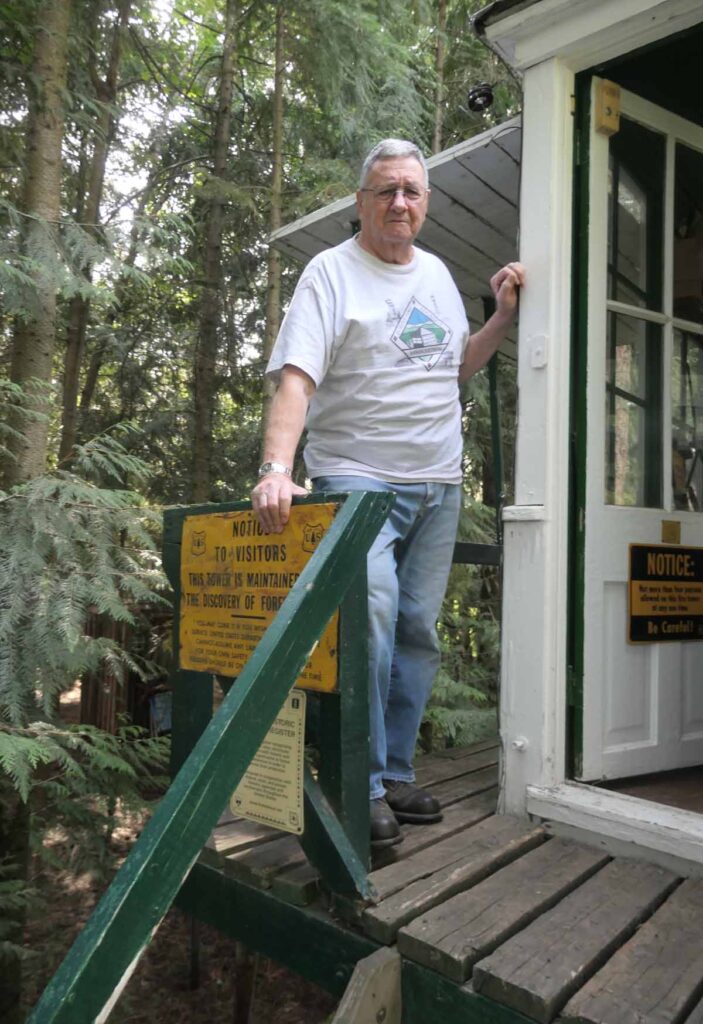

Ray invited us to come up and visit his lookout.

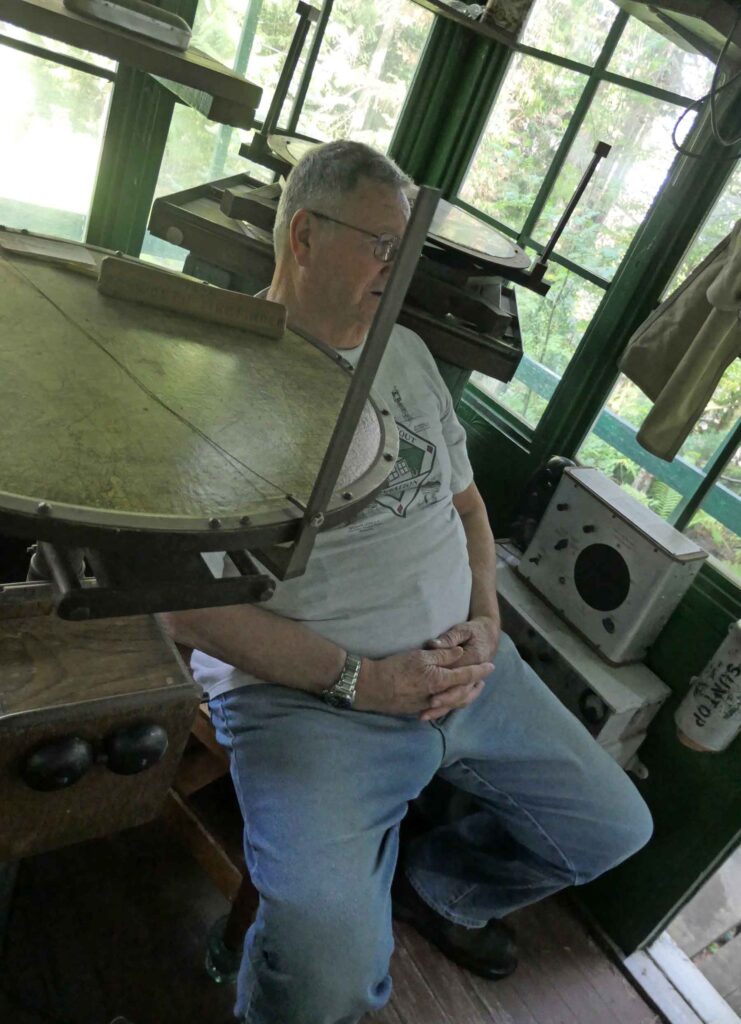
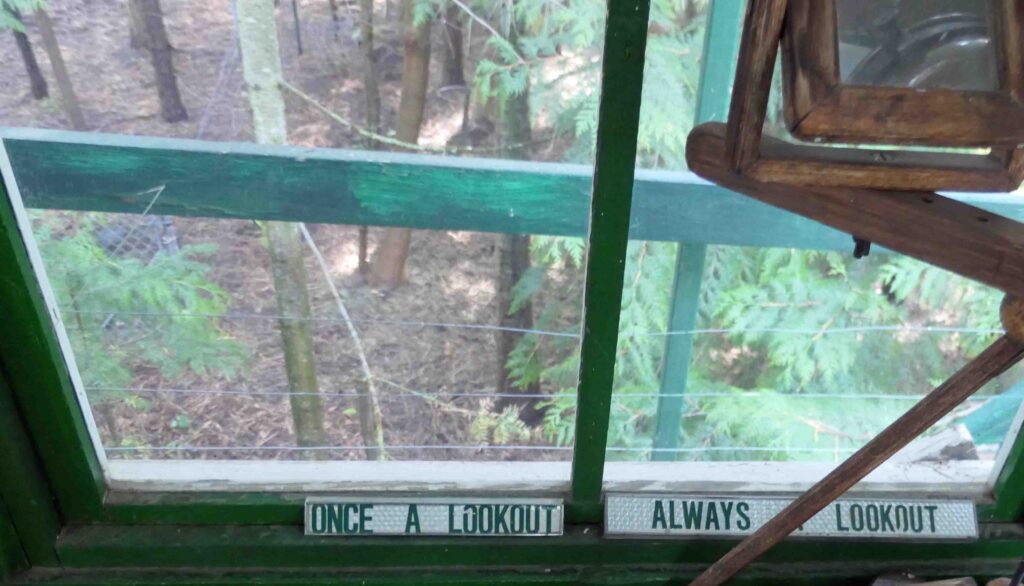
FFLA’s LOOKOUT NETWORK ~ Vol. 3-4, Winter, 1993: “The L-6 cab was trailered around to State Fairs throughout the Pacific Northwest…Most heartwarming were the moments when oldtimers would come inside and set the fire on a distant smoke, then relax in the lightning insulated chair with tears of nostalgia for the summers of long ago when they manned their lonely towers.”


Our visit to the Mount Hull Lookout Site ~ 8/26/2021
We drove to the base of Mount Hull on good forest roads. We parked at the bottom of the narrow and rocky final lookout road. This road, which had been first built in 1934, was still drivable for high clearance vehicles. We elected to get a little bit of exercise by walking the final 6/10 of a mile, with 350’ elevation gain.
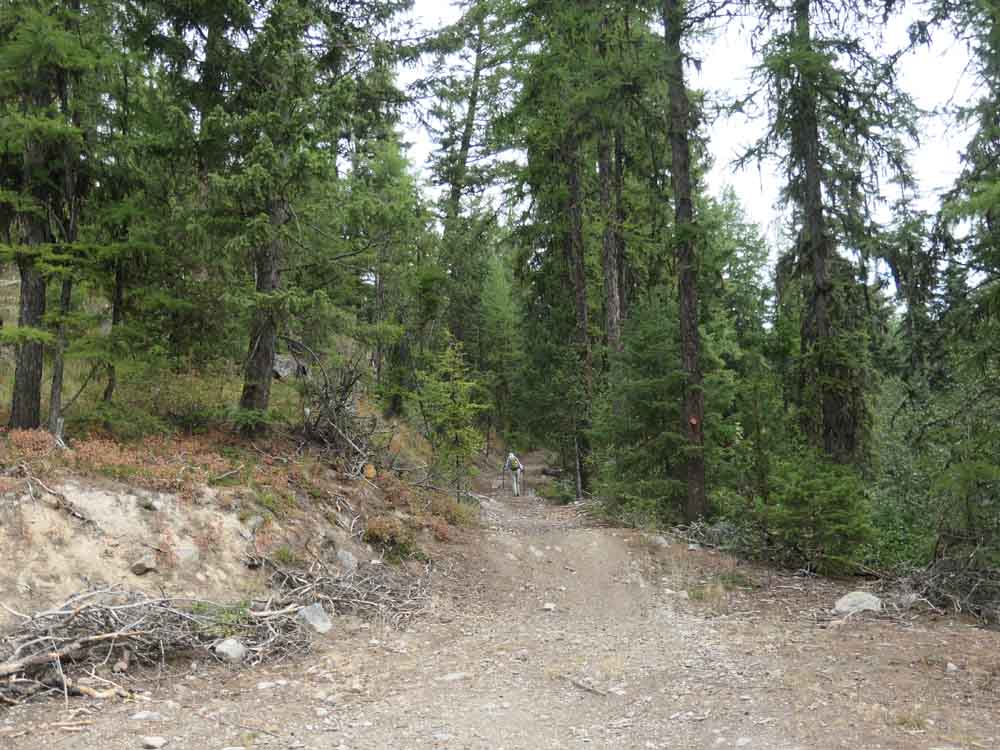
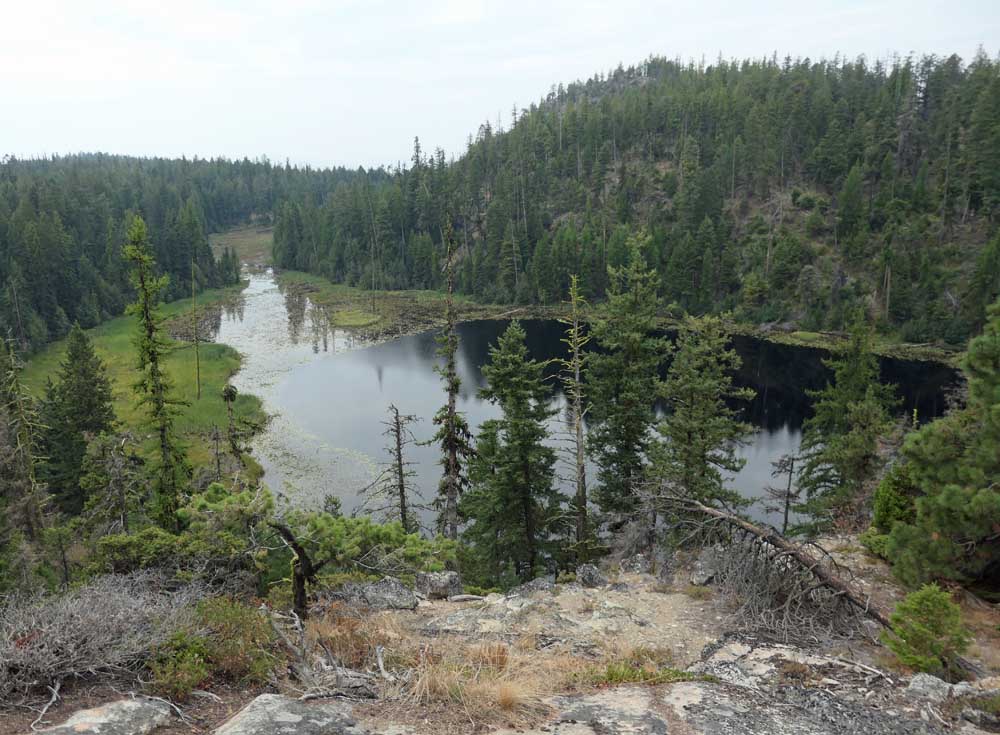
We looked down at the mis-named Summit Lake, which was at the base of Mount Hull, from the road. The CGS Data Sheet also called this Little Black Diamond Lake.
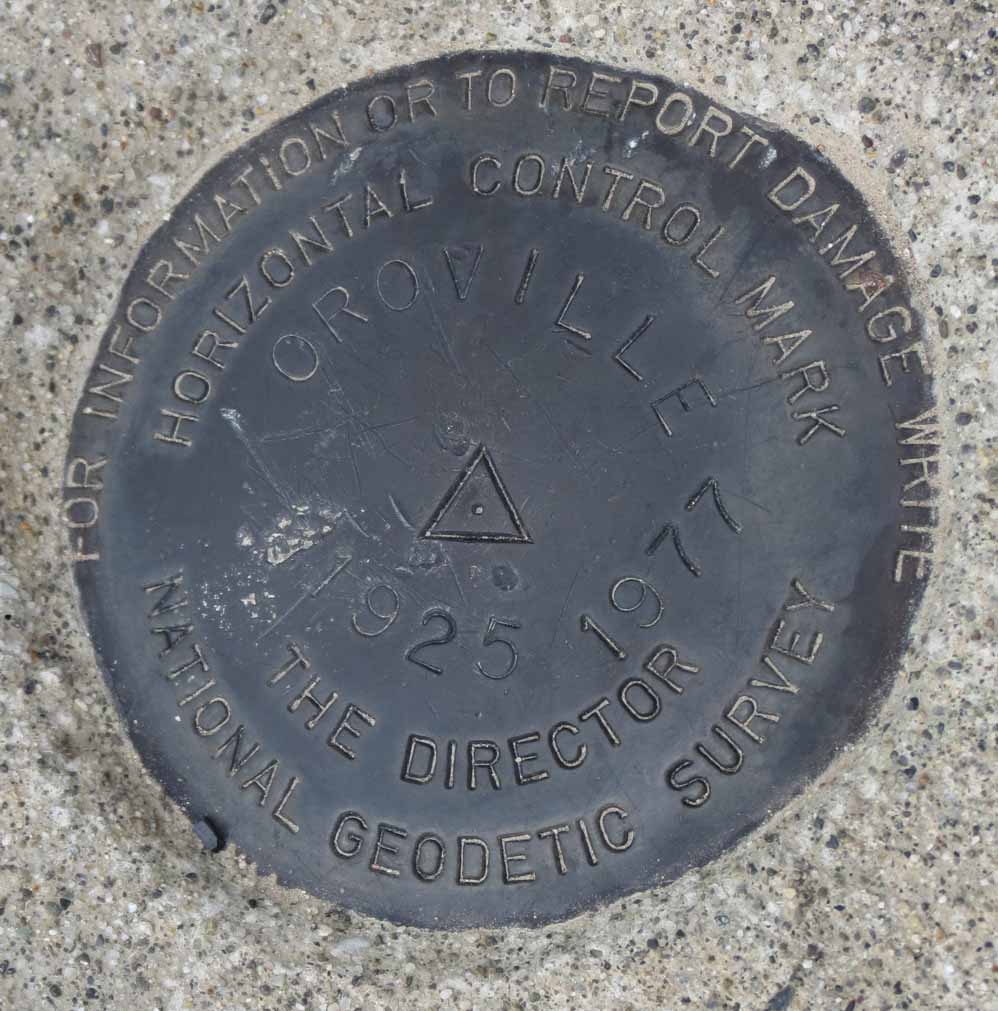
We found the Oroville Benchmark set into the exposed rock ledge. The disc, which had originally been set in 1925, was later found missing. A replacement one was placed in the same location in 1977.
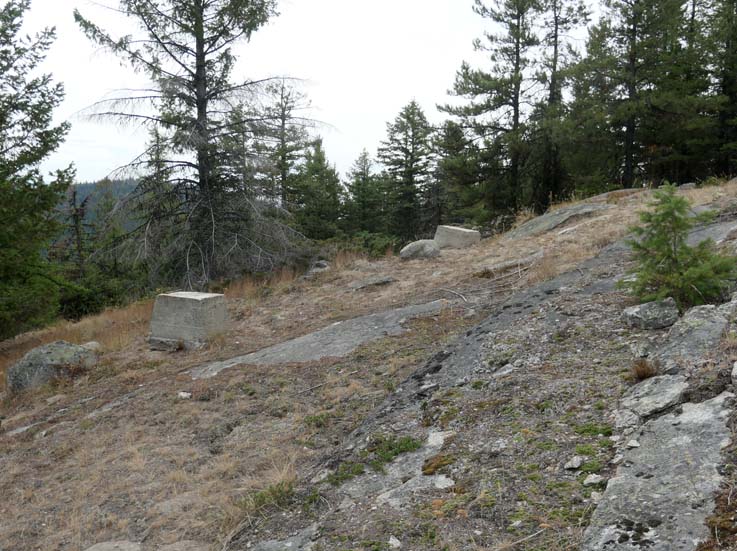
Two lookout footing blocks could be seen from the benchmark ledge.
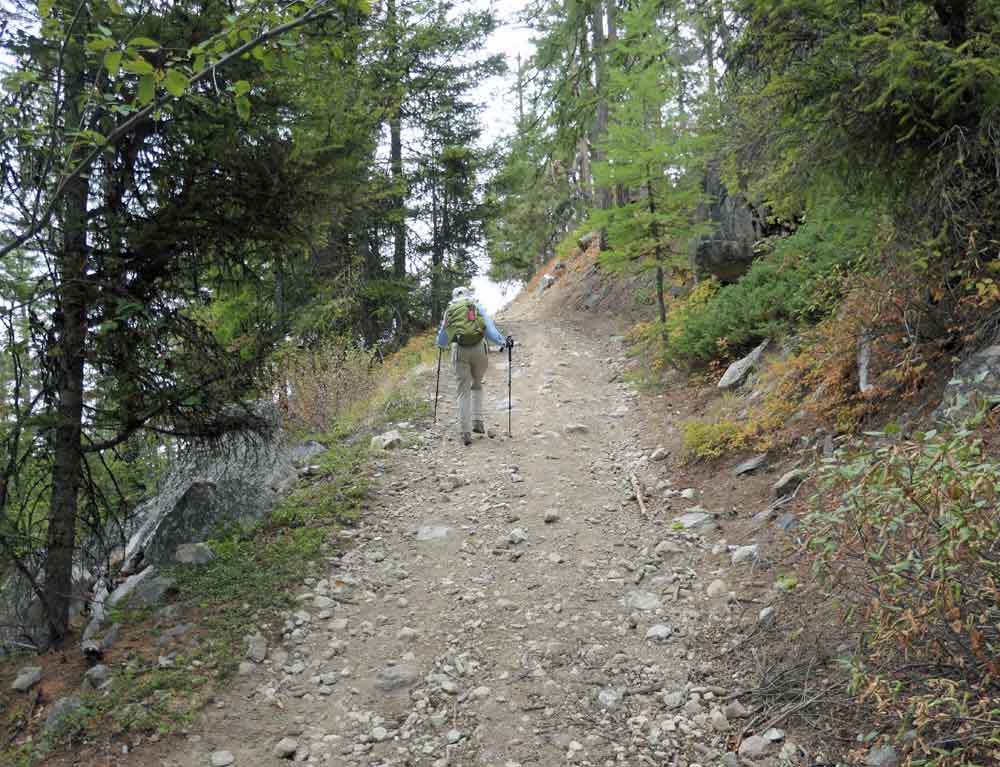
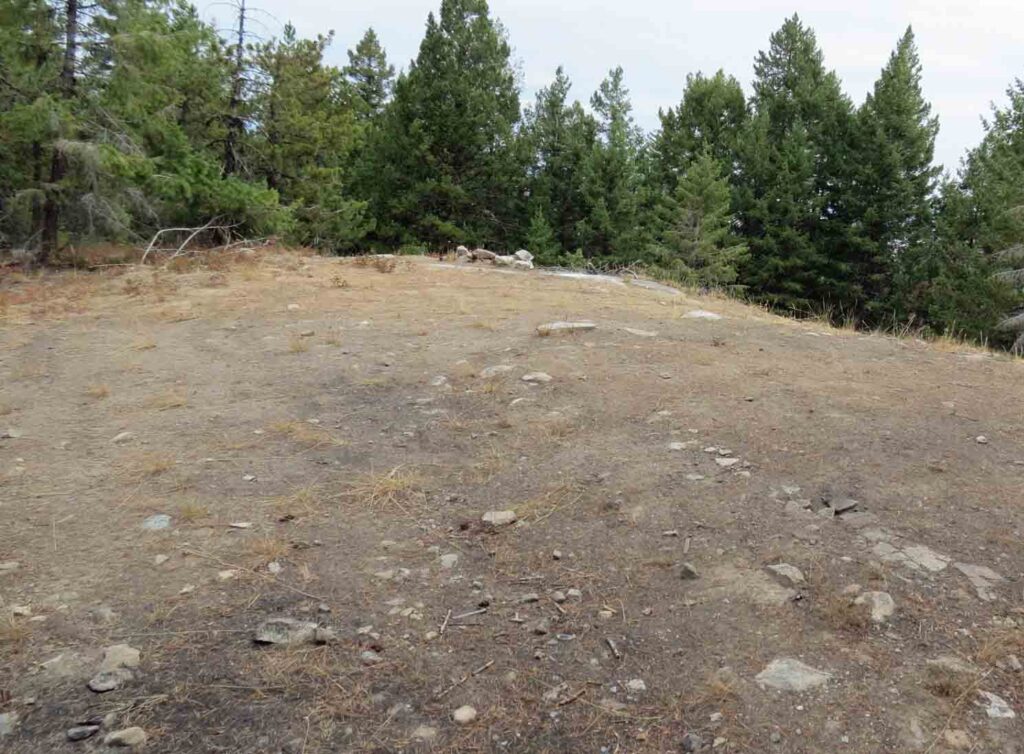
We reached the lookout site at the end of the road. An exposed solid rock ledge could be seen at the other end of this flat spot.

The Oroville NGS Benchmark Data Sheet said a cabin was approximately 25 feet south of the benchmark disc. This undated USFS photo shows the log cabin. The other building may have been the AWS’s woodshed, while the tower only the lower part of the tower remains.
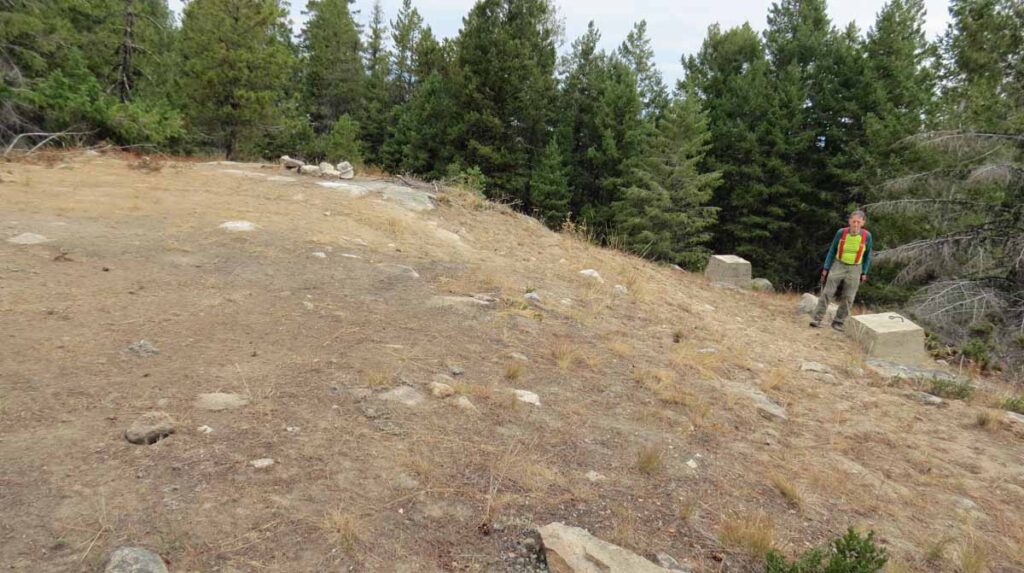
The two remaining footing blocks were on the slope below the flat spot.

July 5, 1939.


Two of the lookout tower legs sat on these remaining footing blocks, while the footings for the other two legs had been up on the cabin level flat spot.

Visitors to Hull Mountain Lookout ~1940 USFS photo.

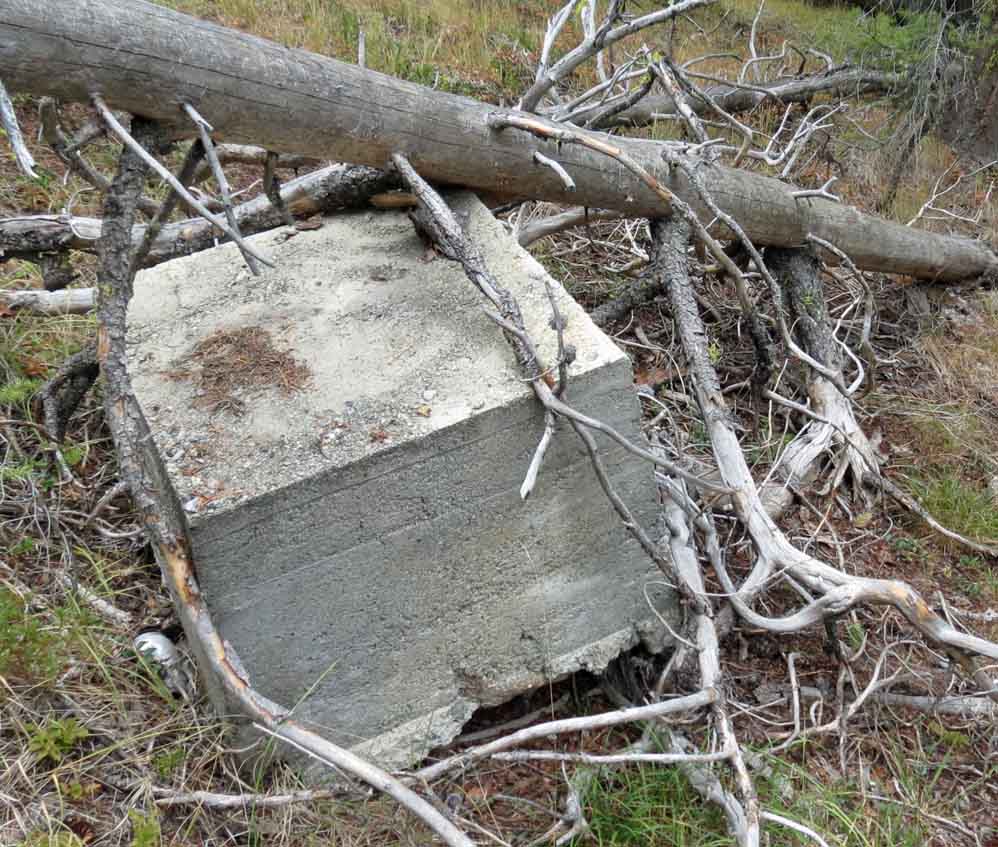


We found four other foundation blocks which had been pushed over to the side of the lookout site. Remains of wood and hardware from some of the destroyed lookout buildings were in the woods near one of the foundation blocks.
